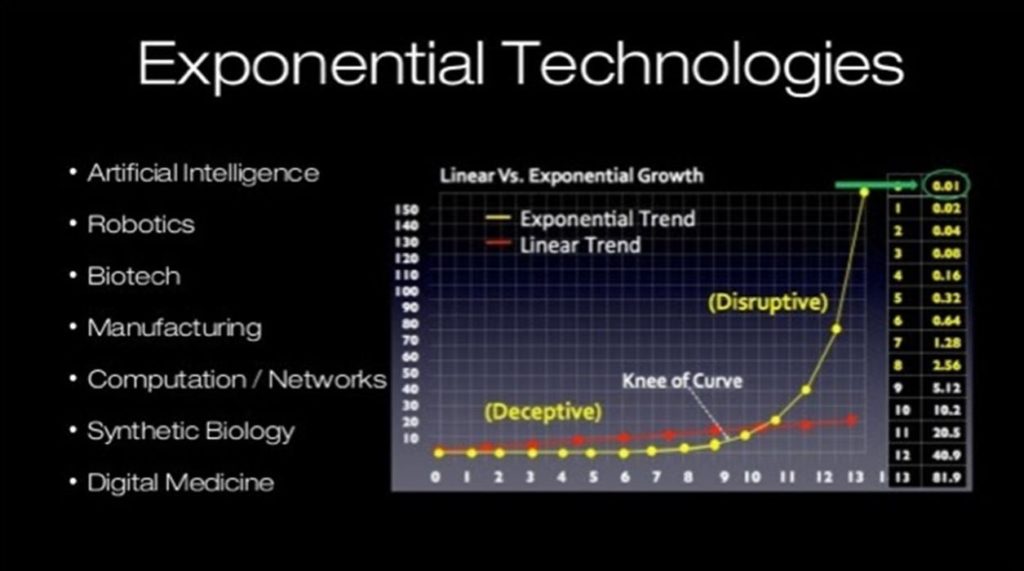
Charles R. Goulding reviews The Exponential Age, which places 3D printing at the forefront of transformation.
In his new book, “The Exponential Age,” author, Azeem Azhar, describes how accelerating technology is transforming business, politics, and society.
Azhar focuses on what he calls 4 key domain technologies including:
- Computing
- Energy
- Biology, and
- Manufacturing/3D Printing
Exponential improvement in computing power is widely recognized. For energy, Azeem covers multiple technologies including: solar, wind, battery storage, and electric vehicles.
For biology, there is a wide range of exponential technologies including human genome sequencing, and synthetic biology. Azhar cites some estimates that 60 percent of physical inputs in the global economy could be produced biologically by 2040.
3D Printing as Exponential Technology
We were pleased that for the manufacturing sector, Azhar put a major emphasis on 3D printing. He states that over the next ten years we will see a performance increase of 14 times. He quotes Terry Wohlers, the leading additive manufacturing analyst, as saying that the 3D printing market grew eleven times in the decade leading up to 2019 which is an annual growth rate of 27%.
4 Technologies Multiplier Effect
Azeem describes the multiplier effect for the 4 technologies as they increasingly overlap. We have focused on the biology 3D printing multiplier impact with recent Fabbaloo articles covering scaffolds, lab-grown organs, hydrogels of CollPlant Biotechnologies, an Israeli company focused on this area.

It is our belief that when thinking exponentially, 3D printing should be included. We are not alone in in this belief. Ray Kurzweil, Director of Engineering at Google and Singularity University Chairman, believes that the convergence of 3D printing, nanomaterials and software will inevitably change the world in an exponential revolution.
Kurzweil holds that the true exponential manufacturing breakthrough will happen around 2030, when nanotechnology and 3D printing are combined. “The ultimate revolution will take place when we start printing designs fabricated from individual atoms,” Kurzweil has said, “Exponential growth is always surprising. It’s going to keep happening and it’s going to be delightful.”
The Research & Development Tax Credit
The now permanent Research and Development (R&D) Tax Credit is available for companies developing new or improved products, processes and/or software.
3D printing can help boost a company’s R&D Tax Credits. Wages for technical employees creating, testing and revising 3D printed prototypes can be included as a percentage of eligible time spent for the R&D Tax Credit. Similarly, when used as a method of improving a process, time spent integrating 3D printing hardware and software counts as an eligible activity. Lastly, when used for modeling and preproduction, the costs of filaments consumed during the development process may also be recovered.
Whether it is used for creating and testing prototypes or for final production, 3D printing is a great indicator that R&D Credit eligible activities are taking place. Companies implementing this technology at any point should consider taking advantage of R&D Tax Credits.
Conclusion
This book is a must-read for anyone interested in technology, innovation, and the future. 3D printing is an industry that touches all aspects of exponential technologies.

